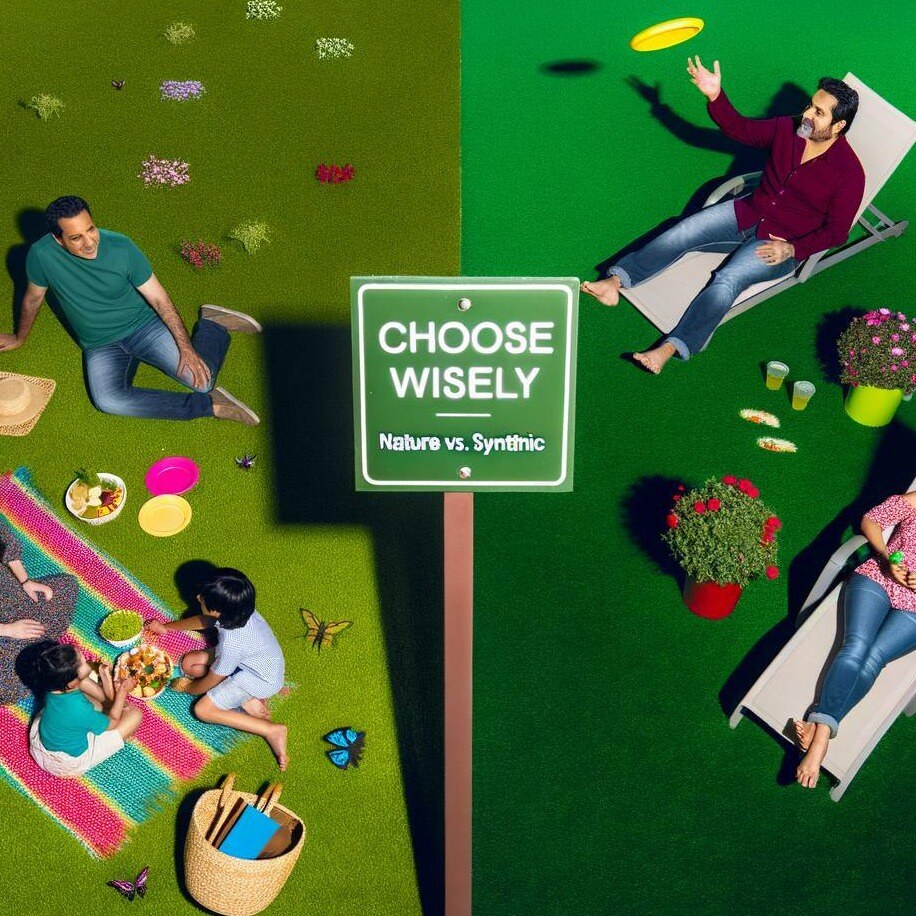
As homeowners weigh the pros and cons of natural grass versus artificial turf, understanding the environmental impact of each is crucial for making an informed decision.
The Environmental Consequences of Artificial Turf
Artificial turf may seem like a convenient, low-maintenance option for homeowners, but it comes with significant environmental drawbacks. Firstly, the production of artificial turf involves the use of plastics, chemicals, and other non-renewable resources. These materials contribute to pollution and are not biodegradable, leading to long-term waste issues.
Additionally, artificial turf heats up more than natural grass, which can increase temperatures in urban areas, contributing to the urban heat island effect. This heightened heat can make outdoor spaces uncomfortable and even dangerous during hot weather. Moreover, the surface runoff from artificial turf can carry harmful chemicals into local water systems, potentially affecting wildlife and water quality.
The Ecological Benefits of Natural Grass
Natural grass offers numerous ecological benefits that make it a more sustainable option for homeowners. One of the most significant advantages is its ability to produce oxygen. Through the process of photosynthesis, a well-maintained lawn can generate enough oxygen for a family of four. This oxygen production is crucial for maintaining a healthy atmosphere and supporting life.
Furthermore, natural grass acts as a natural filter, trapping dust, pollutants, and allergens, which can improve air quality. It also provides a habitat for various forms of wildlife, from insects to small mammals, enhancing local biodiversity. Grass lawns also contribute to soil health by preventing erosion and maintaining soil structure.
Water Usage: A Comparative Analysis
Water usage is often cited as a major disadvantage of natural grass lawns, especially in areas prone to drought. However, with proper irrigation techniques and drought-resistant grass varieties, water consumption can be significantly reduced. Natural grass also helps in water infiltration, reducing runoff and promoting groundwater recharge.
In contrast, artificial turf requires periodic cleaning, which can involve the use of water to wash away debris and contaminants. While it may initially seem like a water-saving option, the long-term water usage for maintenance can add up. Additionally, the production process of artificial turf is water-intensive, further diminishing its perceived water-saving benefits.
The Carbon Footprint: Grass vs. Turf
When considering the carbon footprint, natural grass has a clear advantage. Grass lawns sequester carbon dioxide from the atmosphere, storing it in the soil and plants. This process helps mitigate the effects of climate change by reducing the overall concentration of greenhouse gases.
On the other hand, artificial turf has a substantial carbon footprint due to its manufacturing process, which involves the use of fossil fuels and the emission of greenhouse gases. The transportation and installation of artificial turf also contribute to its overall carbon footprint, making it a less environmentally friendly option compared to natural grass.
When Artificial Turf Makes Sense
While the environmental benefits of natural grass are clear, there are scenarios where artificial turf may be justifiable. In small, shaded spaces where natural grass struggles to grow, artificial turf can provide a green, usable surface without the need for constant maintenance or water. It can also be a practical solution for high-traffic areas where natural grass would quickly wear down.
In these specific circumstances, the use of artificial turf can be a reasonable choice. However, it is important for homeowners to weigh the environmental costs and benefits carefully and consider sustainable alternatives, such as using native plants or ground covers, which can thrive in shaded conditions and offer similar aesthetic and functional benefits.
Subscribe Here!
.webp?width=200&height=55&name=Logo%20horizontal%2070-2%20(1).webp)